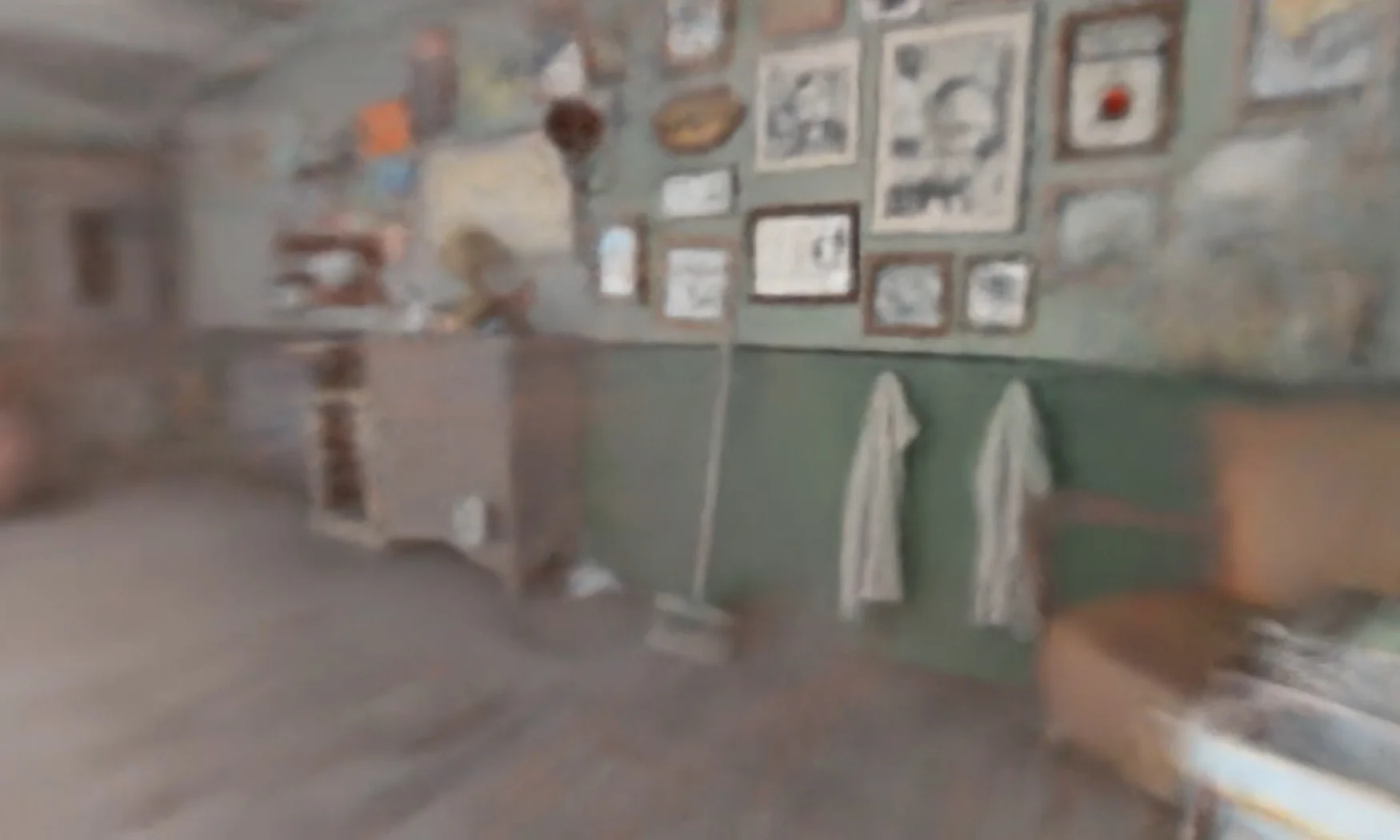Researchers on the College of Maryland have turned eye reflections into (considerably discernible) 3D scenes. The work builds on Neural Radiance Fields (NeRF), an AI expertise that may reconstruct environments from 2D photographs. Though the eye-reflection method has an extended option to go earlier than it spawns any sensible functions, the examine (first reported by Tech Xplore) supplies an interesting glimpse right into a expertise that might ultimately reveal an setting from a sequence of easy portrait photographs.
The group used refined reflections of sunshine captured in human eyes (utilizing consecutive photographs shot from a single sensor) to attempt to discern the individual’s rapid setting. They started with a number of high-resolution photographs from a set digital camera place, capturing a transferring particular person trying towards the digital camera. They then zoomed in on the reflections, isolating them and calculating the place the eyes had been trying within the photographs.
The outcomes (right here’s your entire set animated) present a decently discernible environmental reconstruction from human eyes in a managed setting. A scene captured utilizing an artificial eye (beneath) produced a extra spectacular dreamlike scene. Nevertheless, an try to mannequin eye reflections from Miley Cyrus and Woman Gaga music movies solely produced imprecise blobs that the researchers might solely guess had been an LED grid and a digital camera on a tripod — illustrating how far the tech is from real-world use.

College of Maryland
The group overcame important obstacles to reconstruct even crude and fuzzy scenes. For instance, the cornea introduces “inherent noise” that makes it tough to separate the mirrored gentle from people’ complicated iris textures. To handle that, they launched cornea pose optimization (estimating the place and orientation of the cornea) and iris texture decomposition (extracting options distinctive to a person’s iris) throughout coaching. Lastly, radial texture regularization loss (a machine-learning method that simulates smoother textures than the supply materials) helped additional isolate and improve the mirrored surroundings.
Regardless of the progress and intelligent workarounds, important obstacles stay. “Our present real-world outcomes are from a ‘laboratory setup,’ resembling a zoom-in seize of an individual’s face, space lights to light up the scene, and deliberate individual’s motion,” the authors wrote. “We consider extra unconstrained settings stay difficult (e.g., video conferencing with pure head motion) as a result of decrease sensor decision, dynamic vary, and movement blur.” Moreover, the group notes that its common assumptions about iris texture could also be too simplistic to use broadly, particularly when eyes usually rotate extra extensively than in this sort of managed setting.
Nonetheless, the group sees their progress as a milestone that may spur future breakthroughs. “With this work, we hope to encourage future explorations that leverage sudden, unintentional visible indicators to disclose details about the world round us, broadening the horizons of 3D scene reconstruction.” Though extra mature variations of this work might spawn some creepy and undesirable privateness intrusions, no less than you’ll be able to relaxation simple understanding that right this moment’s model can solely vaguely make out a Kirby doll even beneath essentially the most excellent of situations.
